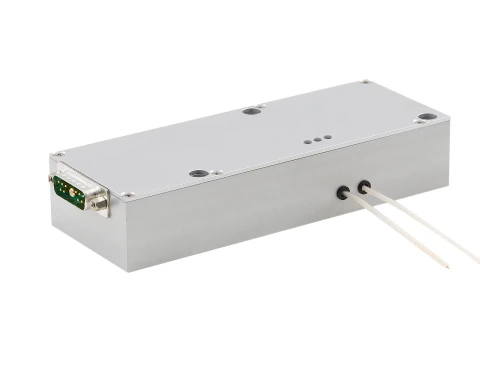Description
HVSW-03 Pockels Cell Driver with Embedded Power Supply
The HVSW-03 is an advanced Pockels cell driver meticulously designed for optimal performance with pico- and femtosecond lasers. This device is used for pulse picking and controlling regenerative amplifiers, ensuring precision and reliability in demanding laser applications.
With a maximum output voltage of 2kV, the HVSW-03 can achieve repetition rates of up to 2MHz at reduced output voltages around 1kV. Its rapid transition times, ranging from 6 to 8 nanoseconds, depend on the load capacitance and the driver's configuration, making it a versatile choice for various laser setups. The HVSW-03 features a compact design, which facilitates easy integration into existing systems.
It employs conductive cooling through its bottom surface, enhancing its thermal management capabilities. The embedded high voltage power supply, requiring a simple +24V DC input, adds to its convenience and efficiency. The driver is equipped with both analogue and RS-485 interfaces, and configuration software compatible with Windows OS is available to streamline setup and operation. This Pockels cell driver is engineered to deliver exceptional performance, particularly with load capacitance typical to Pockels cells used in the laser industry, ranging from 5 to 7pF.
The module's bipolar output, formed by applying +1kV to one output wire and -1kV to another, ensures precise control over voltage differences. Sequential output pulses alternate polarity by default, thanks to the full bridge schema, providing flexibility for various operational requirements. For users needing fixed polarity, a modified version is available. Additionally, the driver offers adjustable pulse widths from 15ns to 2200ns, with options for extended range modifications to suit specific needs.
Other our pulse pickers:
HVSW-04 up to 4 MHz but requires water cooling and external power supply
QBY- series, incl. encased driver for laboratory, fast switch but several kHz repetition rates
MHz-class Pulse Picker, HVSW-03 Pockels Cell Driver with Embedded Power Supply
Specifications
| Voltage Range: | 0 – 2 KV |
|---|---|
| Rep Rate Range: | Single Shot to >1 MHz |
| Pulse Width Range: | 15 – 2200 ns |
| Optical Rise And Fall Time: | 6 ns |
| Maximum Repetition Rate: | 2 MHz |
| Transition Times: | 6-8 ns |
| Pulse Width: | 15-2200 ns |
| Input Voltage: | +24 V DC |
| Load Capacitance: | 5-7 pF |
| Output: | Bipolar |
Features
- Optimized for Pico- and Femtosecond Lasers: The HVSW-03 Pockels cell driver is specifically designed for pulse picking and regenerative amplifier control, making it ideal for pico- and femtosecond laser applications.
- High Voltage Output: Capable of delivering a maximum output voltage of 2kV, with a maximum repetition rate of up to 2MHz at lower output voltages (~1kV).
- Fast Transition Times: Achieves transition times as quick as 6-8ns, depending on load capacitance and driver configuration.
- Adjustable Pulse Width: Pulse width is adjustable from 15ns to 2200ns, with options for other ranges available upon request.
- Compact and Efficient Design: The compact design (169x60x32 mm) includes conductive cooling through the bottom surface and an embedded high voltage power supply, requiring only a +24V DC input.
- Load Capacitance Compatibility: Best performance is achieved with load capacitance typical to Pockels cells in the laser industry (5-7pF).
- Bipolar Output: The module provides a bipolar output, forming a 2kV pulse by applying +1kV to one wire and -1kV to another, ensuring effective voltage differences.
- Alternating Polarity: Sequential output pulses have alternating polarity by default, with an option for fixed polarity available.
- Pulse Width Adjustment Options: Standard mode offers fixed pulse width (~15ns) and variable pulse width (100-2200ns). A wide range (WR) modification allows continuous adjustment from 15-2200ns.
Applications
The Pockels cell driver HVSW-03 is a dedicated high voltage high repetition rate driver for pico- and femtosecond lasers. It represents a combination of two fast drivers (based on MOSFET technology) in a full-bridge schema. The primary use is for extracting single pulses from a pulse train.
Frequently Asked Questions
What is the HVSW-03 Pockels cell driver with embedded power supply used for?
What is the maximum output voltage and repetition rate of the HVSW-03?
How fast are the transition times for the HVSW-03 Pockels cell driver?
What interfaces does the HVSW-03 support?
How does the HVSW-03 Pockels cell driver with embedded power supply handle output polarity?
What is the pulse width adjustment range for the HVSW-03?
What is the input power requirement for the HVSW-03 Pockels cell driver?
Similar Products
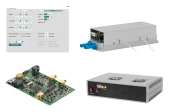

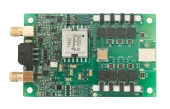
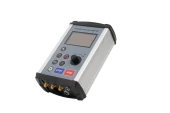
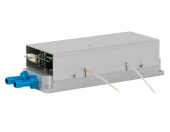
Your inquiry has been received.
Create an account by adding a password
Why create an account?
- Auto-complete inquiry forms
- View and manage all your past messages
- Save products to your favorites
- Close your account anytime — no hassle
